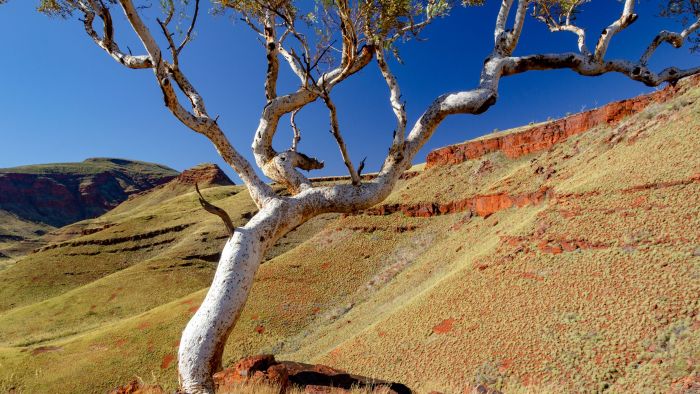Dozens of sacred sites in the Pilbara and Goldfields regions of Western Australia are under threat from approvals granted by the State Government since the destruction of the 46,000-year-old Juukan Caves last month by Rio Tinto.
Key points:
- A letter from Banjima native title holders in the WA Pilbara said they were “angry and hurt” about possible destruction of 40 sacred sites
- The sites include ochre pits, ceremonial grounds and rock shelters with evidence of human occupation going back at least 10,000 to 15,000 years
- Ngalia traditional owners oppose the destruction of another seven sites in WA Goldfields region by Australian Potash
The latest sites under threat are in the WA Goldfields, where traditional owners claim a “blanket” Section 18 approval across 148 square kilometres of Ngalia land for mining company Australian Potash could destroy seven Indigenous heritage places.
Ngalia traditional owner Kado Muir told RN Breakfast that the heritage protection system is “broken” in the Goldfields region.
Mr Muir, an anthropologist and archaeologist, said Aboriginal people had no power to object to Section 18 approvals under the Aboriginal Heritage Act, which allows developers to disturb or destroy sites.
“There’s an expectation from government and industry in this development mindset that you [should] no longer protest or stand up for the sites on your country,” he said.
The opposition by Ngalia traditional owners in the Goldfields is similar to the concerns of traditional owners f

